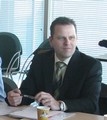KEY MESSAGE: Get It Right at the Front-End for Long-Term Sustainability
Note to Reader:
On October 18-19, the Vancouver Island Economic Alliance (VIEA) is hosting its 5th Annual State of the Island Summit. On the afternoon of October 18th, CAVI-Convening for Action on Vancouver Island is holding a 3-hour “Forum within the Summit” . This pre-Summit breakout session is co-hosted by the VIEA Sustainability Task Force.
The initial capital cost of municipal infrastructure is about 20% of the life-cycle cost; the other 80% largely represents a future unfunded liability. The “Forum within the Summit” will showcase the Comox Valley experience in developing a regional response to the infrastructure liability challenge confronting all local governments.
To view the program at a glance, click on VIEA Summit: Draft Agenda for CAVI Forum The article below elaborates on program objectives and elements.

A Regional Response to Infrastructure Liability
Fiscal constraints provide a driver for a change in the way local governments plan, finance, implement, and over time replace infrastructure. Due to strong, local leadership at the working level, the Province has recognized the Comox Valley as a provincial demonstration of how to work across boundaries, align efforts at a watershed scale, and walk the talk in applying the ‘4Cs’ – that is, communicate, cooperate, coordinate and collaborate.
Get It Right at the Front End
The Forum is organized in two parts: presentations; town-hall sharing. The goal of the presentations is to bring the audience up to a common level of understanding so that the town-hall discussion will be informed.
“First, the Comox Valley regional team will provide context. Our key message is: Get it right at the front-end for long-term sustainability. Our experience in working towards the goal of Sustainable Service Delivery will set the scene for the town-hall sharing in the second part,”  states Judy Walker, planner with the Village of Cumberland.
states Judy Walker, planner with the Village of Cumberland.
“The change in approach starts with land use planning and determining what infrastructure and services can be provided sustainably, both fiscally and ecologically. Another key message is that all those involved in land development have a role to play in achieving Sustainable Service Delivery.”
“The topic for the town-hall part is Sustainable Service Delivery Means Integrate Land Use Planning and Infrastructure Asset Management. Our goal is that attendees will leave with practical examples of collaboration and integration, and will be inspired to apply what they have learned to their own situations.”
 “The ‘get it right at the front-end’ is a theme that we first explored at the Comox Valley Developers Dialogue in December 2010,” adds Derek Richmond, Manager of Engineering with the City of Courtenay, and CAVI Chair-Elect. “We know that if we do things right at the front-end, the end result will be a lot better, and everyone will wind up saving time and money. The end product will be an added-value product,”
“The ‘get it right at the front-end’ is a theme that we first explored at the Comox Valley Developers Dialogue in December 2010,” adds Derek Richmond, Manager of Engineering with the City of Courtenay, and CAVI Chair-Elect. “We know that if we do things right at the front-end, the end result will be a lot better, and everyone will wind up saving time and money. The end product will be an added-value product,”
Sustainable Service Delivery
“The legislative authority for integration of land use planning and asset management, including financial management, already exists within the Local Government Act and Community Charter,” states Glen Brown, Deputy Inspector of Municipalities. “Local  governments can develop a truly integrated Asset Management Strategy that views the watershed through an environmental lens.”
governments can develop a truly integrated Asset Management Strategy that views the watershed through an environmental lens.”
“The Province is challenging local governments to think about what asset management means BEFORE the asset is built. Sustainable Service Delivery is the Province’s branding for a life-cycle way of thinking about infrastructure needs and how to pay for them over time.”


